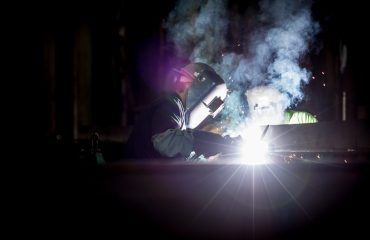body {
font-family: sans-serif;
line-height: 1.6;
}
h1, h2, h3 {
color: #333;
}
The steel industry is a cornerstone of modern infrastructure, impacting everything from skyscrapers to bridges to automobiles. Ensuring the quality and reliability of steel products is paramount, and this is where ASTM International standards play a crucial role. This comprehensive guide explores the significance of ASTM compliance in steel production, covering key aspects from testing procedures to the potential consequences of non-compliance.
Understanding ASTM Standards for Steel
ASTM International (formerly known as the American Society for Testing and Materials) develops and publishes voluntary consensus standards for materials, products, systems, and services. These standards provide a common language and framework for specifying, testing, and evaluating steel properties. For steel production, ASTM standards cover a vast range of aspects, including chemical composition, mechanical properties (tensile strength, yield strength, ductility, hardness), impact resistance, and weldability. Specific standards are used to define the characteristics of different steel grades, such as A36 structural steel, A572 high-strength low-alloy steel, and various stainless steel grades. These standards are crucial for ensuring consistent quality and facilitating trade across different manufacturers and regions.
The Crucial Role of Testing and Quality Control
Adhering to ASTM standards requires rigorous testing and quality control throughout the steel production process. From raw material inspection to finished product verification, numerous tests are conducted to ensure compliance. These tests might include chemical analysis (spectroscopy, wet chemistry) to determine the precise composition of the steel, tensile testing to measure strength and ductility, impact testing (Charpy or Izod) to assess toughness, and hardness testing (Brinell, Rockwell, Vickers) to determine the resistance to indentation. Non-destructive testing methods, such as ultrasonic testing and magnetic particle inspection, are also employed to detect internal flaws or defects. Maintaining detailed records of these tests is crucial for demonstrating compliance and traceability.
Certification and Accreditation: Proving ASTM Compliance
Many steel manufacturers seek certification to demonstrate their commitment to ASTM compliance. Third-party certification bodies, accredited by relevant organizations, audit manufacturers’ processes and testing procedures to verify their adherence to the specified standards. These certifications provide independent verification of quality and build trust with customers. Accredited labs perform the testing and issue reports that are crucial for certification. The certification process often involves regular audits and inspections to maintain compliance over time. Having a valid certification is often a prerequisite for securing contracts, especially in large-scale infrastructure projects.
Consequences of Non-Compliance with ASTM Standards
Failure to comply with ASTM standards can have significant consequences, ranging from financial penalties to reputational damage and even safety hazards. Non-compliant steel can lead to structural failures, compromising the safety of buildings, bridges, and other structures. This can result in costly repairs, legal liabilities, and even loss of life. In addition to safety concerns, non-compliance can lead to contract breaches, loss of business, and damage to a company’s reputation. Regulatory bodies can impose fines and sanctions for non-compliance, further impacting profitability and operations. Therefore, maintaining strict adherence to ASTM standards is not merely a matter of best practice but a crucial aspect of responsible and sustainable steel production.
Future Trends in ASTM Compliance and Steel Production
The steel industry is constantly evolving, with ongoing advancements in materials science, manufacturing processes, and testing techniques. ASTM International continuously updates its standards to reflect these advancements, ensuring that they remain relevant and effective. Future trends include a greater emphasis on sustainable steel production, with standards addressing environmental impact and carbon footprint reduction. The increasing use of advanced materials characterization techniques, such as advanced microscopy and simulation tools, will also play a significant role in enhancing the accuracy and efficiency of testing and quality control. Furthermore, the integration of digital technologies, such as data analytics and artificial intelligence, will improve traceability and predictive maintenance, leading to enhanced compliance and reduced waste.
In conclusion, ASTM compliance is not just a regulatory requirement but a fundamental aspect of producing high-quality, safe, and reliable steel. By adhering to these standards and investing in robust testing and quality control procedures, steel manufacturers can ensure the integrity of their products, protect their reputation, and contribute to the safety and sustainability of the built environment.
SEO Tags:
ASTM Steel Standards, Steel Quality Control, ASTM Compliance Certification, Steel Testing Procedures, Steel Manufacturing Standards




